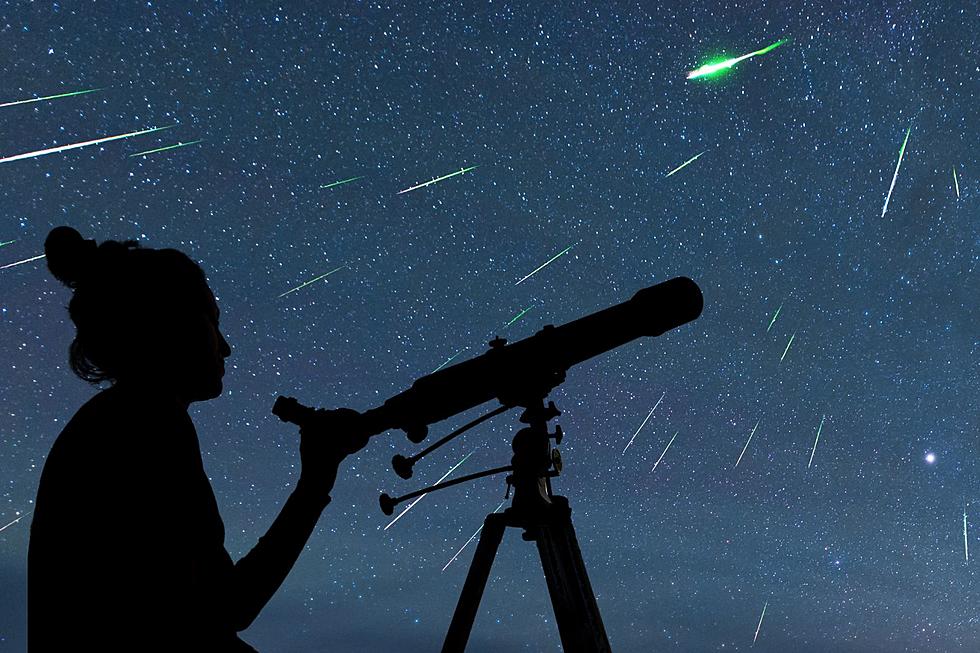
How to See the Perseid Meteor Shower Over Wyoming This Weekend
Look to the night sky this weekend and make a wish - shooting stars will dance across Wyoming's heavens. The Perseid meteor shower returns every year, typically around early August. This year, the shower peaks on August 12 and 13.
We contacted experts at the University of Wyoming's Department of Physics and Astronomy for details on how and when to catch the show. Here's what they said:
Perseid Shooting Stars Shower Over Wyoming This Weekend: How to See It!
According to Gilbraith, "The shower "radiates" out from the constellation of Perseus, which is Northeast during the evening, and is generally only visible in the Northern Hemisphere; the Southern Hemisphere is on the far side of where the Meteors are coming from."
Gilbraith suggests finding a spot with very little cloud coverage to see the Perseid. Find a spot away from the city's light pollution, with minimal vegetation blocking the skyline (i.e., avoid heavily forested areas.)
When is the Best Time to See the Meteors in Wyoming Skies?
According to the American Meteor Society, the best time to view the meteors in North America is "near 08:00 Universal Time" on August 13. This corresponds to 2 a.m. MDT. If you don't want to stay up until (or wake up at) 2 a.m., you can probably catch some "earthgrazing" Perseids during the evening hours. Still, these will be harder to see - the AMS describes early evening views as "the worst time to try and view the shower" because "most of the activity will occur beyond your line of sight, being blocked by the horizon."
What Are Meteors Made Of?
Gilbraith explained that meteors are, essentially, space dust from ancient comets. Meteors are essentially grains of comet fragments that burn up when they shoot through the Earth's atmosphere. Max said that meteors can fall as fast as 36 miles per second!
Why Do Meteors Leave Color Streaks in the Sky?
The astrophysics experts at the University of Wyoming note that shooting stars leave different colored trails of colors that vary based on what elements make up the dust or comet fragments. Most comets, Max said, share "the building blocks of planets like the Earth and have similar elements as our planet."
The Perseid Meteor Shower is the result of Comet Swift-Tuttle. The comet was officially discovered by the scientific community in 1862 by Lewis Swift and Horace Parnell Tuttle. Back in 1862, the Perseid was as bright as the Polaris, North Star. However, mention of the meteors has been recorded as far back as 36 C.E. in China. Gilbraith noted that "the link between comets and meteor showers was first proposed in 1836 and, by 1862, by plotting the 133-year orbit of Comet Swift-Tuttle, it was determined to be the parent of the long-running meteor shower.
Why Do the Perseid Meteor Showers Happen Every August?
The Perseid's return annually results from the Earth's rotation around the sun. "We get meteor showers the same time every year because it's where the Earth's orbit intersects with the comet tails debris field around the sun," explains Gilbraith. However, whether we can see them yearly in Wyoming depends on various factors.
"The Perseids occur every year; the only factors that limit the visibility are light pollution, location, and weather. A full moon during the shower can really limit the number of meteors seen, but thankfully, this year, we have a waning crescent moon that doesn't rise till [around] 3 a.m. on the peak nights of the shower (August 12 - 13)."
For more information on Wyoming astronomy, visit the Harry C. Vaughan Planetarium website by clicking here. The Planetarium puts on educationally enriching and entertaining shows about space and astronomy throughout the year.
